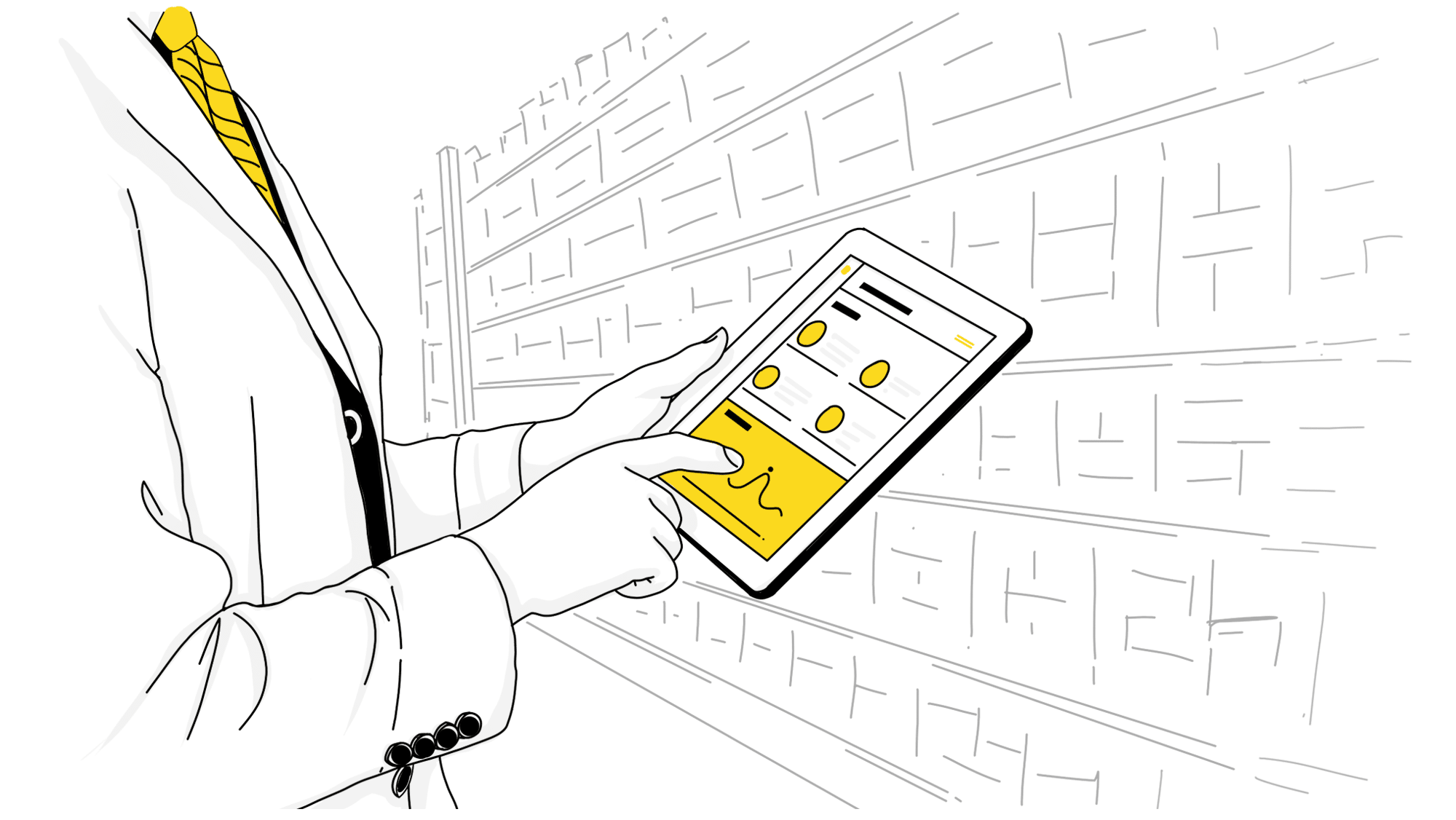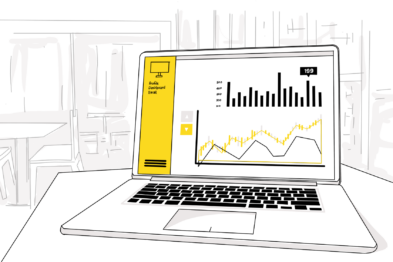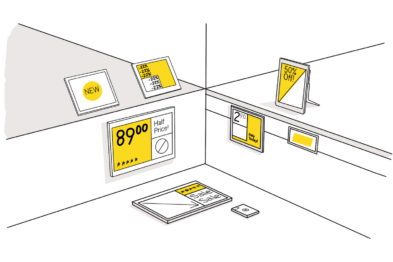8 Strategies to Enhance Efficiency Through Retail Digital Transformation
Retail digital transformation is underway, and it’s more than a mere trend. By implementing new technology at every level, the retail industry can aim to optimize the way it functions, from business processes to customer experiences, staff agility, growth, and more. Pushing the boundaries between e-commerce and physical retail, AR/VR, big data, mobile-first, and other revolutionary concepts drive innovation, allowing retailers to reach new heights.
What Is Retail Digital Transformation?
Retail digital transformation encompasses several components, each with specific characteristics and a unique impact on the industry.
Definition and Key Concepts
Digital transformation is at the heart of most retail trends currently in focus. The notion is pivotal, from streamlining processes to increasing customer value, managing inventory, reimagining marketing, and driving growth.
Retail digital transformation refers to the adoption of technology-enhanced operational models at every level of the retail industry, ranging from cost optimization to POS systems, self-checkout systems, personalized shopping experiences, VR showrooms, AI-powered product recommendations, geofencing, and more.
Importance in the Modern Retail Landscape
Practically half of purchases worldwide now happen online. Variety, proximity, convenience, and pricing are no longer powerful enough arguments to garner customer loyalty, as shoppers have access to a globalized marketplace that caters to their most specific needs. Even marketing and communication strategies must be based on diverse models, as consumers have come to expect personalization at every turn. Data breathes life into the retail digital transformation, allowing retailers to understand their targets and multiply their revenue and growth potential.
Why Retail Digital Transformation Matters
From retail advertising all the way to customer satisfaction, digital transformation plays an integral part in the modern retail landscape. It all hinges on the power of data and the insights it provides into what drives sales today.
Improving Operational Efficiency
Retail digital transformation addresses operational efficiency on several levels. Gathering comprehensive data across every channel available allows retailers to build fully informed decision-making strategies that benefit growth and profit. Streamlined inventory management means quick order fulfillment, dynamic warehouse management, and fewer stock-outs. Meanwhile, advanced points-of-sale deliver satisfying shopping experiences that feed new data into the system.
Enhancing Customer Experience
Understanding customers creates opportunities to meet them where they are at. And, thanks to digital technologies, the practical means to put this knowledge into action are there. Retail digital transformation provides a wealth of self-service options by leaning on multiple channels, including mobile apps, websites, live chat, and in-store digital solutions. This allows for real-time, personalized services and introduces seamless customer journeys, minimizing in-person interactions and saving costs.
Driving Business Growth
The market insights generated through customer data analysis help outline overall strategies and specific actions retailers can take to promote agility and boost their profitability. AI even goes as far as to provide in-depth interpretations of real-time situations, making retail operations much more organic.
Strategy 1: Implementing Advanced Data Analytics
Retail digital transformation has given rise to multiple strategies retailers can utilize conjointly to strengthen their business. Leveraging data analytics can help create efficient marketing campaigns, bring personalized shopping experiences to consumers, and refine inventory management practices.
Understanding Customer Behavior
The advent of retail analytics has transformed physical stores into invaluable digital assets and created a loop where customer data feeds better customer experiences. In other words, by recording and interpreting customer behavior inside the store, retailers can identify trends and segment them according to consumer profiles. In turn, they can tailor their offerings to more individual preferences and bring shoppers an enhanced experience that fosters loyalty.
Optimizing Inventory Management
Data is also at the heart of inventory management, playing its part in making the process as efficient as possible. Retail digital transformation places automation at retailers’ fingertips, allowing them to streamline their inventory processes. From analyzing in-aisle availability and comparing it to warehouse stocks to fulfilling orders on the fly, assessing lead times and safety stocks, and avoiding overstocking and stock-outs, advanced data analytics revolutionizes inventory management.
Strategy 2: Embracing Omnichannel Retailing
Customers now have access to many channels, and retail digital transformation encourages them to explore these online and offline touchpoints with no restrictions, seamlessly switching between them for a streamlined customer journey.
Integrating Online and Offline Channels
Retail digital transformation isn’t about abandoning physical retail in favor of online touchpoints. Instead, it provides retailers with tangible solutions to integrate omnichannel strategies and create a presence that encompasses physical environments, social media, email, and websites. Wherever they engage, customers find a unified experience that cultivates loyalty by fostering the sense that their uniqueness is important and valued.
Streamlining the Customer Journey
This unified experience delivers more convenience and creates a coherence that helps customers navigate the retail space. Omnichannel environments make it possible to synchronize transactions, for example. The shopping experience begins online, where the customer places an order. With click-and-collect, the customer can then pick up the items from a physical location, where they are also welcome to redeem loyalty points in person, ask the staff for personalized advice, etc.
Strategy 3: Leveraging Artificial Intelligence and Machine Learning
AI (Artificial Intelligence) and ML (Machine Learning) are some of the most crucial embodiments of the ongoing retail digital transformation. These technologies profoundly modify how retailers acquire, interpret, and utilize insights from consumer data. They enhance decision-making processes and change how routine tasks are performed, offering optimal reliability.
Personalized Marketing and Recommendations
Retailers now find themselves in a situation where marketing cannot follow a straight, immutable path. This is where AI-driven personalization comes into play, giving retail digital transformation a whole new dimension. What works for one store may not work for its competitors, and vice versa. AI models with ongoing data analysis don’t just allow retailers to adapt to changing market dynamics. They also tailor their marketing approach based on distinct customers through individualized recommendations.
Automating Routine Tasks
As we have already touched upon, retail digital transformation transforms internal operations. Where the pre-digital era required staff to update stock levels, modify price displays, and perform countless other tasks manually, automation enhances processes by an immense margin. But it doesn’t stop there. Automation also makes for more efficient marketing campaigns, allowing retailers to achieve precise targeting using data analytics, CRM, and more.
Strategy 4: Utilizing the Internet of Things (IoT)
IoT technology is what turns automation into tangible reality. Without the physical hardware to collect information from the retail environment and translate commands into actions, tracking products, understanding consumer behavior, and establishing omnichannel connections would be impossible.
Smart Shelves and Inventory Management
Electronic shelf labels — or digital price tags — enable agility beyond pricing. These dynamic tools deliver rich or local product information to facilitate inventory management, all while relaying activation campaigns for shoppers.
Enhancing the In-Store Experience
Because they serve as a touchpoint for shoppers in the stores, these IoT devices are crucial drivers of customer engagement. VusionGroup’s technology is designed to offer real-time, customer-centric experiences with positive interactions at their heart. For example, NFC, QR technology, and AR overlays invite shoppers to explore a new side of the products on display (or promotion) through their mobile devices.
Strategy 5: Adopting Cloud Computing Solutions
The issue with local computing solutions is that they work in a vacuum. This means no real-time access to operational and inventory data, limited, hardware-dependent storage, and complications in terms of scalability.
Scalability and Flexibility
Retailers must evolve in an ever-changing landscape. From seasonal trends to promotions, and even weather conditions, any event can throw off what they thought was a dynamic strategy. This is where traditional IT systems fall short, as they don’t seamlessly scale up to accommodate customers’ needs or down to minimize costs when the trend reverses. Cloud computing allows retailers to adapt to demand.
Reducing IT Costs
Thanks to this inherent flexibility, Cloud computing keeps IT costs down by ensuring no expenses are wasted on infrastructure that is only required periodically.
Strategy 6: Investing in Cybersecurity Measures
Omnichannel strategies warrant enhanced security features that protect retailers and consumers across online and offline platforms.
Protecting Customer Data
Data offers immense potential for retailers, but it should always be used responsibly. From data loss to full-blown cyberattacks, retailers who are new to the digital scene tend to be among the most vulnerable. The right system can offer the security layer necessary for safe data transmission in retail environments. VusionCloud’s SaaS-based model monitors millions of devices, all while ensuring customers are protected from cyberattacks, data leaks, and legal issues.
Ensuring Compliance with Regulations
Data protection isn’t a mere recommendation, it’s an obligation. The regulations in place mandate that retailers implement robust data security measures to protect the data they collect and store. Here as well, selecting a suitable IT system makes all the difference.
Strategy 7: Enhancing Mobile Commerce
Leaning into the retail digital transformation also means embracing the mobile-first mentality. The mobile experience should be part of any omnichannel strategy, providing a personal touchpoint for each customer.
Developing Mobile-Friendly Websites and Apps
Today’s consumers rely on their smartphones for many practical aspects of their lives. They appreciate the convenience of a dedicated app or a well-designed website they can access from any device. From placing orders to looking up product information, and even VR and AR, mobile has its place in the physical retail environment. Even something as simple as being able to scan a label to add an item they like to their Wishlist on the app means they could purchase it later when they might not have otherwise. From the retailers’ perspective, mobile apps create an opportunity to deliver highly targeted ads while securing customer loyalty.
Utilizing Mobile Payment Solutions
Mobile payments are transforming retail. The solution provides unmatched convenience and efficiency, as shoppers can pay for their purchases with just a few taps on their smartphones, without carrying around cash or cards. With much less friction at the point of sale, retailers enjoy a higher conversion rate thanks to a solution that also caters to the preferences of tech-savvy customers.
Strategy 8: Fostering a Digital-First Culture
The retail digital transformation may be transitory, but the digital culture is here to stay. A digital-first approach to retail means understanding digital not as a channel, but as the core of the modern retail business model. This shifts the focus from product-centric to customer-centric, in keeping with the latter’s expectations.
Training and Educating Employees
Even in a digital-first world, a store is as good as its staff. VusionGroup’s solutions are designed to facilitate onboarding and streamline internal processes, making it a breeze to bring employees up to speed. Digitization also benefits continuous learning, providing the ideal tools to refine their skills. A resilient, agile workforce makes for a future-proof store.
Encouraging Innovation and Experimentation
Experimenting and embracing innovation allows retailers to maintain a competitive edge and adapt to satisfy consumers. This mindset empowers retailers to play their part in shaping the future of their industry.



